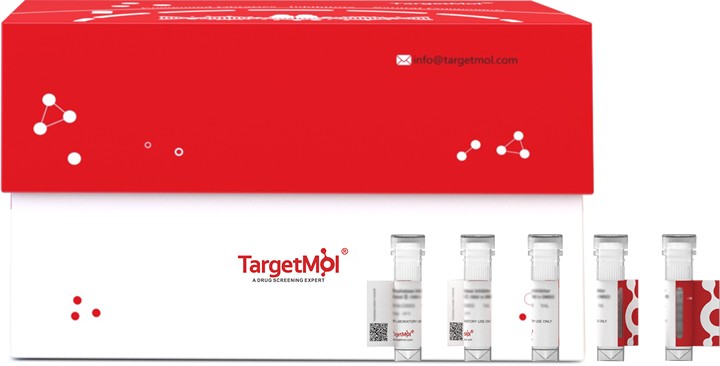Shopping Cart
Remove All Your shopping cart is currently empty
Your shopping cart is currently empty
ATP4A Protein, Human, Recombinant (His & Myc) is expressed in E. coli expression system with N-10xHis and C-Myc tag. The predicted molecular weight is 54.6 kDa and the accession number is P20648.

| Pack Size | Price | USA Warehouse | Global Warehouse | Quantity |
|---|---|---|---|---|
| 5 μg | $105 | 20 days | 20 days | |
| 10 μg | $169 | 20 days | 20 days | |
| 20 μg | $283 | 20 days | 20 days | |
| 50 μg | $428 | 20 days | 20 days | |
| 100 μg | $590 | 20 days | 20 days | |
| 200 μg | $913 | 20 days | 20 days | |
| 500 μg | $1,620 | 20 days | 20 days | |
| 1 mg | $2,530 | 20 days | 20 days |
| Biological Activity | Activity has not been tested. It is theoretically active, but we cannot guarantee it. If you require protein activity, we recommend choosing the eukaryotic expression version first. |
| Description | ATP4A Protein, Human, Recombinant (His & Myc) is expressed in E. coli expression system with N-10xHis and C-Myc tag. The predicted molecular weight is 54.6 kDa and the accession number is P20648. |
| Species | Human |
| Expression System | E. coli |
| Tag | N-10xHis, C-Myc |
| Accession Number | P20648 |
| Synonyms | Proton pump,Potassium-transporting ATPase alpha chain 1,Gastric H(+)/K(+) ATPase subunit alpha,ATP4A |
| Amino Acid | TVTVCLSLTAKRLASKNCVVKNLEAVETLGSTSVICSDKTGTLTQNRMTVSHLWFDNHIHTADTTEDQSGQTFDQSSETWRALCRVLTLCNRAAFKSGQDAVPVPKRIVIGDASETALLKFSELTLGNAMGYRDRFPKVCEIPFNSTNKFQLSIHTLEDPRDPRHLLVMKGAPERVLERCSSILIKGQELPLDEQWREAFQTAYLSLGGLGERVLGFCQLYLNEKDYPPGYAFDVEAMNFPSSGLCFAGLVSMIDPPRATVPDAVLKCRTAGIRVIMVTGDHPITAKAIAASVGIISEGSETVEDIAARLRVPVDQVNRKDARACVINGMQLKDMDPSELVEALRTHPEMVFARTSPQQKLVIVESCQRLGAIVAVTGDGVNDSPALKKADIGVAMGIAGSDAAKNAADMILLDDNFASIVTGVEQGRLIFDNL |
| Construction | 350-783 aa |
| Protein Purity | > 85% as determined by SDS-PAGE. |
| Molecular Weight | 54.6 kDa (predicted) |
| Endotoxin | < 1.0 EU/μg of the protein as determined by the LAL method. |
| Formulation | If the delivery form is liquid, the default storage buffer is Tris/PBS-based buffer, 5%-50% glycerol. If the delivery form is lyophilized powder, the buffer before lyophilization is Tris/PBS-based buffer, 6% Trehalose, pH 8.0. |
| Reconstitution | Reconstitute the lyophilized protein in sterile deionized water. The product concentration should not be less than 100 μg/mL. Before opening, centrifuge the tube to collect powder at the bottom. After adding the reconstitution buffer, avoid vortexing or pipetting for mixing. |
| Stability & Storage | Lyophilized powders can be stably stored for over 12 months, while liquid products can be stored for 6-12 months at -80°C. For reconstituted protein solutions, the solution can be stored at -20°C to -80°C for at least 3 months. Please avoid multiple freeze-thaw cycles and store products in aliquots. |
| Shipping | In general, Lyophilized powders are shipping with blue ice. Solutions are shipping with dry ice. |
| Research Background | The catalytic subunit of the gastric H(+)/K(+) ATPase pump which transports H(+) ions in exchange for K(+) ions across the apical membrane of parietal cells. Uses ATP as an energy source to pump H(+) ions to the gastric lumen while transporting K(+) ion from the lumen into the cell. Remarkably generates a million-fold proton gradient across the gastric parietal cell membrane, acidifying the gastric juice down to pH 1. Within a transport cycle, the transfer of a H(+) ion across the membrane is coupled to ATP hydrolysis and is associated with a transient phosphorylation that shifts the pump conformation from inward-facing (E1) to outward-facing state (E2). The release of the H(+) ion in the stomach lumen is followed by binding of K(+) ion converting the pump conformation back to the E1 state. |
| Size | Quantity | Unit Price | Amount | Operation |
|---|

Copyright © 2015-2025 TargetMol Chemicals Inc. All Rights Reserved.